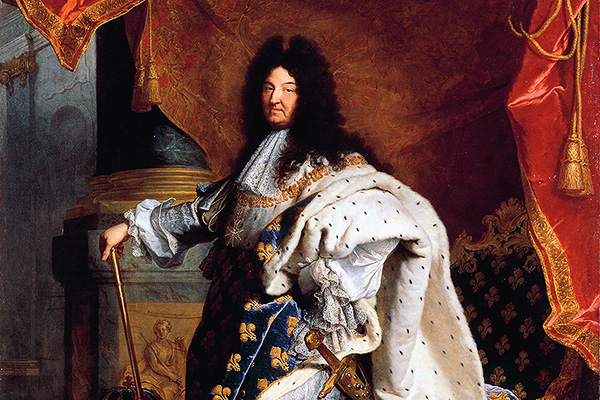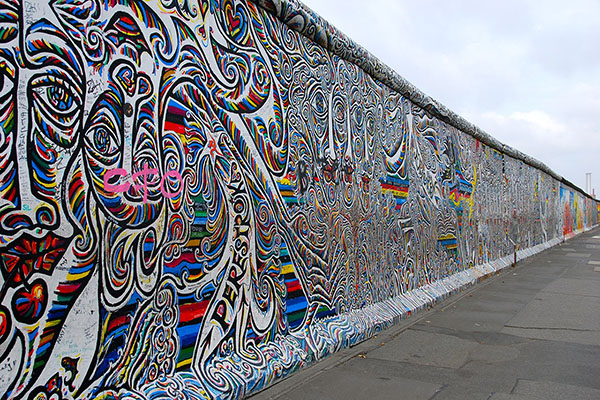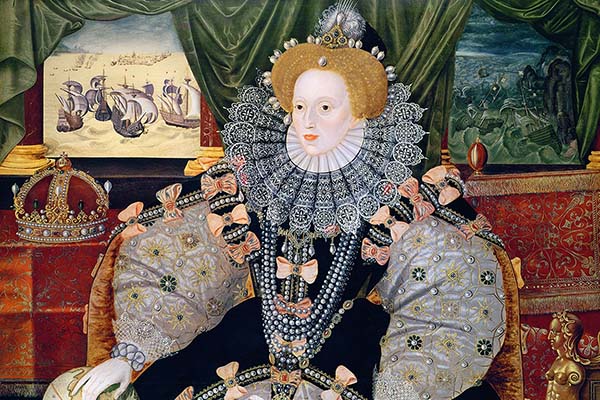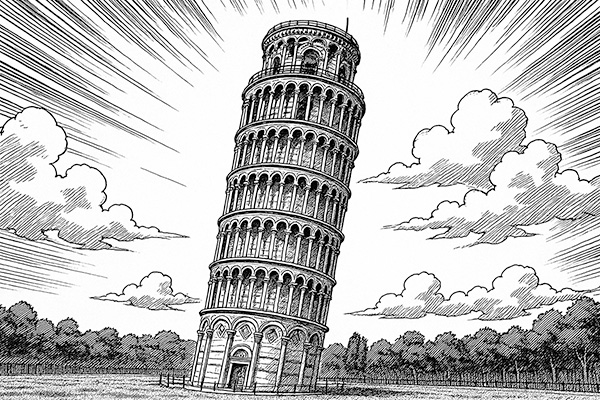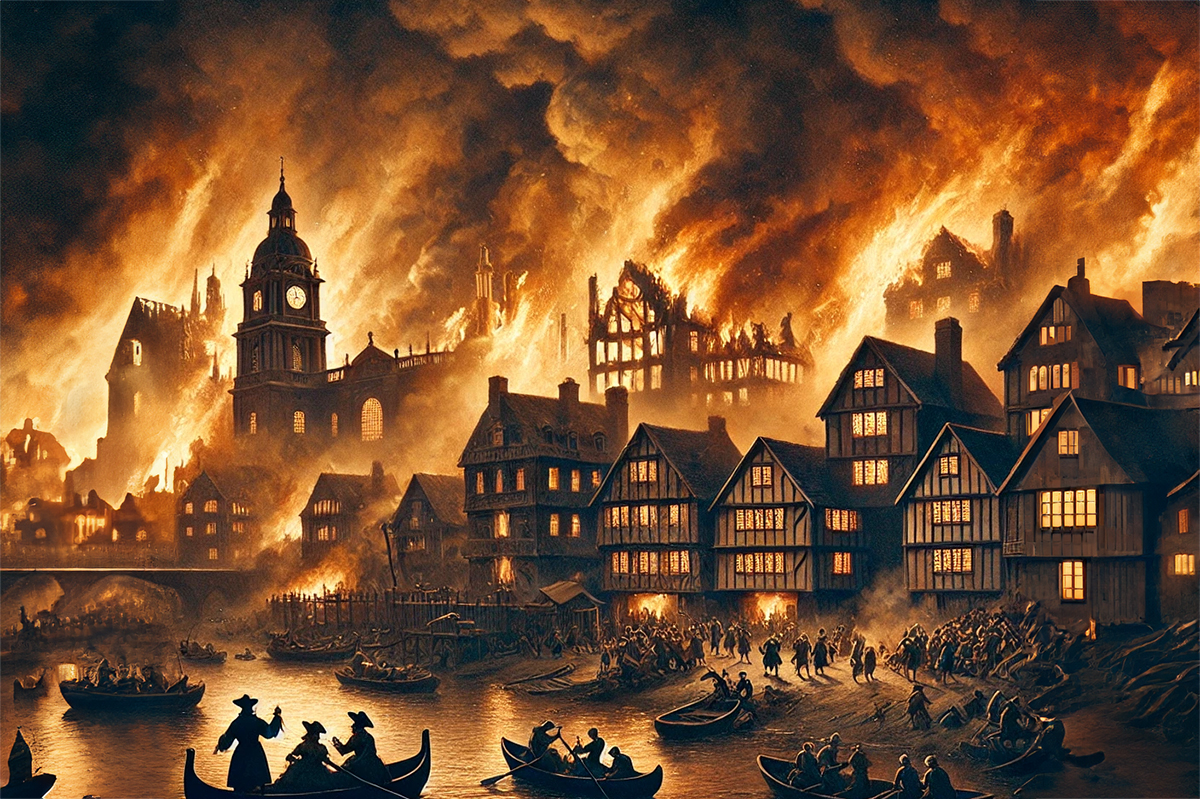
The Great Fire of London started in Thomas Farriner’s bakery on Pudding Lane just after midnight on Sunday, 2nd September 1666, and was extinguished on Wednesday, 5th September at Pie Corner (Pye Corner) in Smithfield. Over 100 years earlier, in 1559, London’s destruction by a “consuming fire” had been predicted by a concerned man -Daniel Baker.
The Golden Boy of Pye Corner is a gold-plated wooden monument located at the corner of Cock Lane and Giltspur Street. An inscription reads: “This boy is in memory put up for the late Fire of London occasioned by The Sin of Gluttony, 1666.” It was originally built into the front of a pub called The Fortune of War, which was demolished in 1910.
St Paul’s Cathedral, already in poor condition, was one of the most famous buildings lost in the fire. Sir Christopher Wren, a leading architect, had proposed demolishing and rebuilding it before the fire, but his plans were rejected. Instead, wooden scaffolding was erected for restoration work — which only fueled the flames. After the fire, Wren was finally tasked with designing a new St Paul’s Cathedral, resulting in the iconic domed structure that stands today.
The official death toll of the fire was just six, with the first recorded victim being a maid at the bakery in Pudding Lane. However, the true number of casualties remains unknown, as the deaths of working-class people were rarely documented. Many victims may have been cremated in the intense heat, leaving no trace behind.
The fire occurred just a year after the last major outbreak of bubonic plague, which had killed 100,000 people—15% of London’s population. Some believed the fire ended the plague by killing rats and fleas that carried the disease. However, historical evidence suggests that the outbreak was already declining beforehand, as the plague also disappeared in other European cities without the help of devastating accidental fires.
The Great Fire of London wasn’t the first to devastate the city. Earlier fires had repeatedly ravaged London, including a fire in 1087 that destroyed an earlier St Paul’s Cathedral, and major blazes in 1135 and 1212. By 1666, laws had already been passed banning wooden buildings and thatched roofs to prevent fires from spreading rapidly. These restrictions still exist today — special permission had to be granted for the modern reconstruction of Shakespeare’s Globe Theatre in 1997, as it features a thatched roof.
Firefighting in the 17th century was primitive. Water wasn’t readily available, and one of the few effective methods was demolishing buildings to create firebreaks. However, the Lord Mayor of London, Sir Thomas Bloodworth, who was awoken to assess the fire, dismissed it as unimportant. Instead of ordering demolitions, he went back to bed, saying it could be put out by a woman peeing on it! Samuel Pepys, a government official and diarist, documented the fire’s spread and advised King Charles II to use gunpowder to create firebreaks — a strategy that finally slowed the flames.
Many Londoners believed the fire was an attack by foreign enemies in retaliation for England’s war with the Dutch. This led to widespread violence against foreigners, and a Frenchman named Robert Hubert falsely confessed to starting the fire. Despite his story being full of inconsistencies, he was convicted and executed — only for it to later be revealed that he hadn’t even arrived in London until two days after the fire began! Anger was so intense that a mob tore his body apart after his execution. Others even blamed King Charles II, suspecting the fire was either revenge for his father’s execution or a plot to clear land for redevelopment, though these claims were unfounded.
The Monument to the Great Fire of London is a 202-foot (61-meter) column, standing exactly 202 feet from the bakery in Pudding Lane where the fire began. It was built to commemorate the disaster and celebrate London’s rebirth and was designed by Sir Christopher Wren, completing construction in 1677. A spiral staircase of 311 steps leads to a viewing platform offering panoramic views of London. The nearby Monument Underground station is named after it.
In 1986, members of the Worshipful Company of Bakers issued a formal apology to the Lord Mayor of London for the role their trade played in the Great Fire. The apology, given 320 years after the disaster, was part of a ceremony marking the 500th anniversary of the bakers’ royal charter — a long-overdue but symbolic gesture of responsibility.



